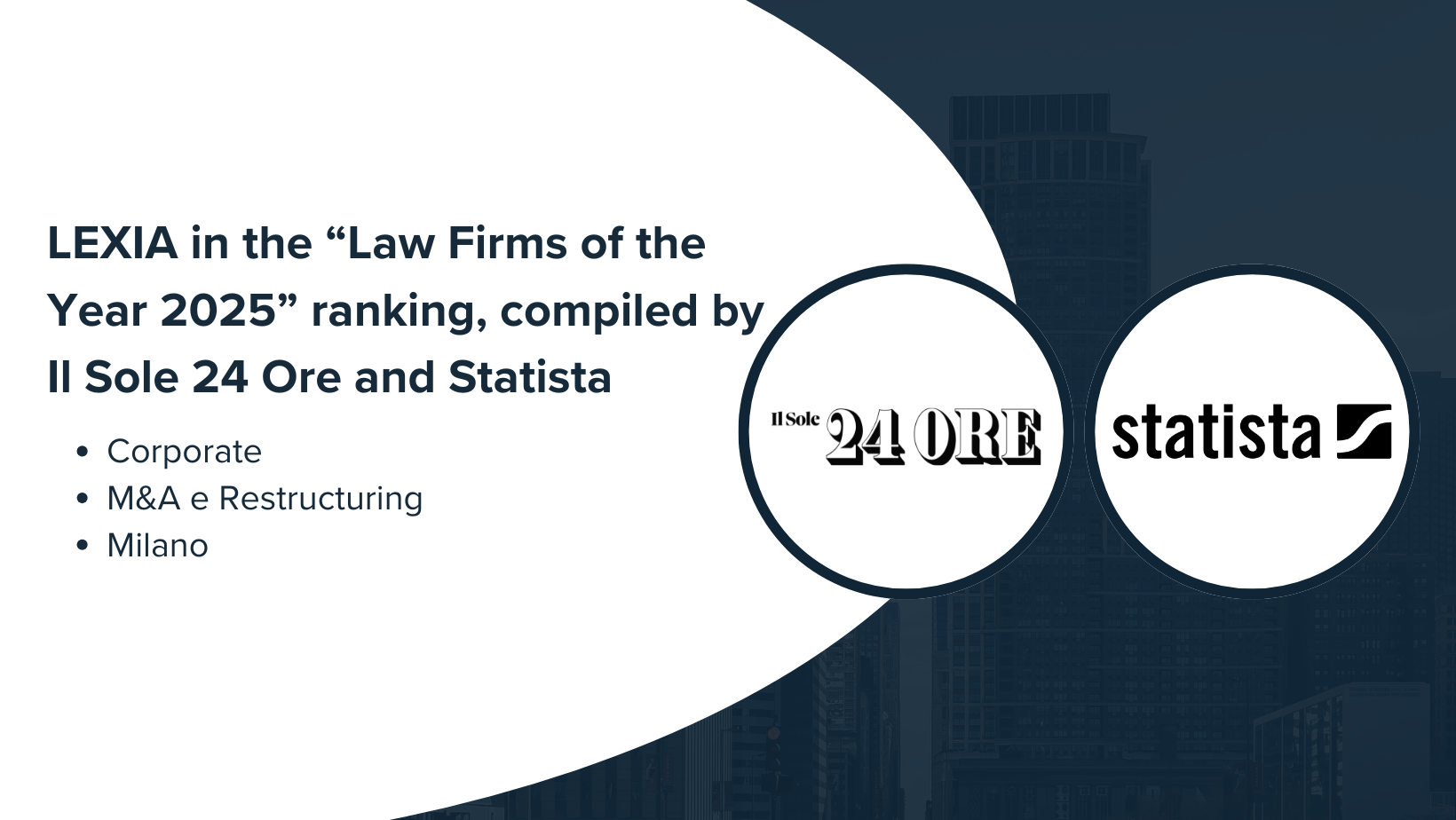On September 27, 2024, Legislative Decree No. 136 of September 13, 2024 (“Correttivo-ter”) was published in the Official Gazette. This is the third – and currently the final – Corrective Decree to the Code of Business Crisis and Insolvency.
The new corrective decree introduced substantial changes to numerous provisions of the Code of Crisis. Apart from some stylistic and detailed adjustments, the Correttivo-ter, on the one hand, incorporates certain practices or resolves interpretative doubts, and on the other, introduces specific innovations widely anticipated by practitioners.
This article aims to provide an overview of the most significant changes introduced by the Correttivo concerning adequate organizational structures and alert tools.
ADEQUATE ORGANIZATIONAL STRUCTURES AND ALERT TOOLS
The Corrective Decree also introduced several changes to the tools for crisis prevention (so-called early warning) and adequate organizational structures.
Specifically, it amended Article 3, paragraph 4, of the Business Crisis and Insolvency Code (C.C.I.I.), refining the intent of the referenced article to clarify that the listed signals are meant to facilitate the „forecasting“ referred to in paragraph 3, even before the emergence of a crisis or insolvency.
In this provision, it is established that the measures outlined in paragraph 1 and the structures described in paragraph 2 must allow for: detecting potential imbalances of a financial, economic, or asset-related nature, assessing the sustainability of debts and the prospects for business continuity, and extracting the necessary information to use the detailed checklist and perform the practical test to verify the reasonable feasibility of a recovery plan.
Thus, these are not alarm signals for an already compromised situation, but rather elements providing forward-looking and, most importantly, preventive indications.
This amendment brought about a substantial change: the focus is no longer on indicators of an ongoing crisis but instead on tools designed to forecast and prevent it, aiming to ensure that it does not materialize at all.
Article 3, therefore, encapsulates the elements that offer preventive guidance.
This implies that businesses, in order to take advantage of such tools, must adopt suitable measures and establish an adequate organizational, administrative, and accounting structure pursuant to Article 2086 of the Civil Code. The goal is to promptly detect signs of a crisis and take the necessary initiatives to address them in a timely manner.
To further strengthen the framework for crisis prevention, the new Corrective Decree also amended Article 25-octies, paragraph 1. Although related to the negotiated settlement of the crisis, this provision now states that the individual responsible for statutory auditing (and not just the supervisory body) is obligated to report in writing to the administrative body the existence of conditions indicating insolvency and/or a state of crisis. This report is intended to trigger the submission of a request for the appointment of an Expert, in accordance with International Auditing Standard (ISA Italia) No. 570 on Going Concern.
Moreover, the Explanatory Memorandum clarifies that the reporting obligation pertains only to the existence of a state of crisis or insolvency, and not merely to preliminary signs of difficulty (i.e., pre-crisis), to prevent unnecessary notifications or reports made solely to “shield” against potential liability actions.
The provision in question seems to implicitly extend to statutory auditors the duty to monitor the adequacy of the company’s organizational, administrative, and accounting structure and its practical effectiveness in ensuring the timely detection of a loss of continuity. However, this duty should arguably remain the sole responsibility of the supervisory body.
Article 25-octies, paragraph 2, has also been revised to stipulate that timely reporting in cases of crisis or insolvency is evaluated for the purpose of “mitigating or excluding” the liability of supervisory bodies. This amendment better defines the scope of the evaluation entrusted to the judiciary in liability actions under Articles 2407 of the Civil Code (liability of the supervisory body) and 15 of Legislative Decree No. 39 of January 27, 2010 (liability of statutory auditors).
Additionally, a second sentence was added to provide clear guidance to those responsible for reporting and to avoid either hasty or delayed notifications. It clarifies that timely reporting is considered as such if performed within sixty days from the time the supervisory body and the statutory auditor, in the proper and diligent exercise of their functions, became aware of the state of crisis.
In essence, the actual date on which the crisis was known (i.e., scientia decoctionis) is relevant for assessing timeliness only if the supervisory bodies have not acted negligently, thereby failing to take effective cognizance of the difficult situation due to their own fault (e.g., by omitting or delaying the necessary checks or the acquisition of relevant documentation).






